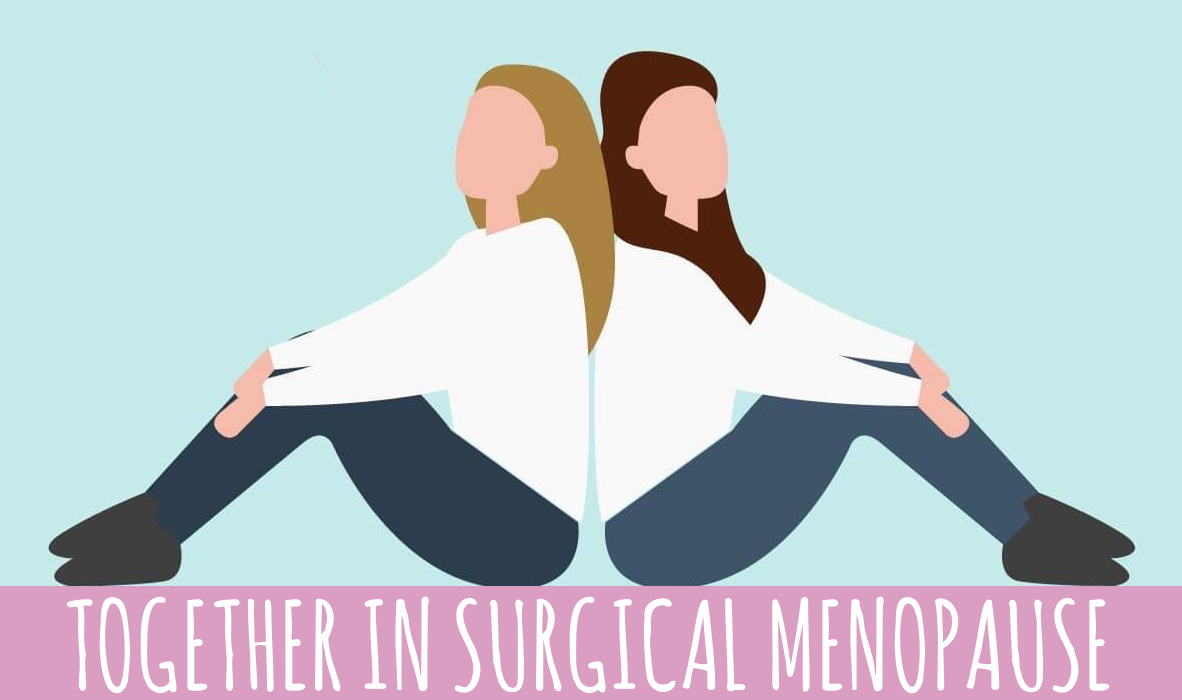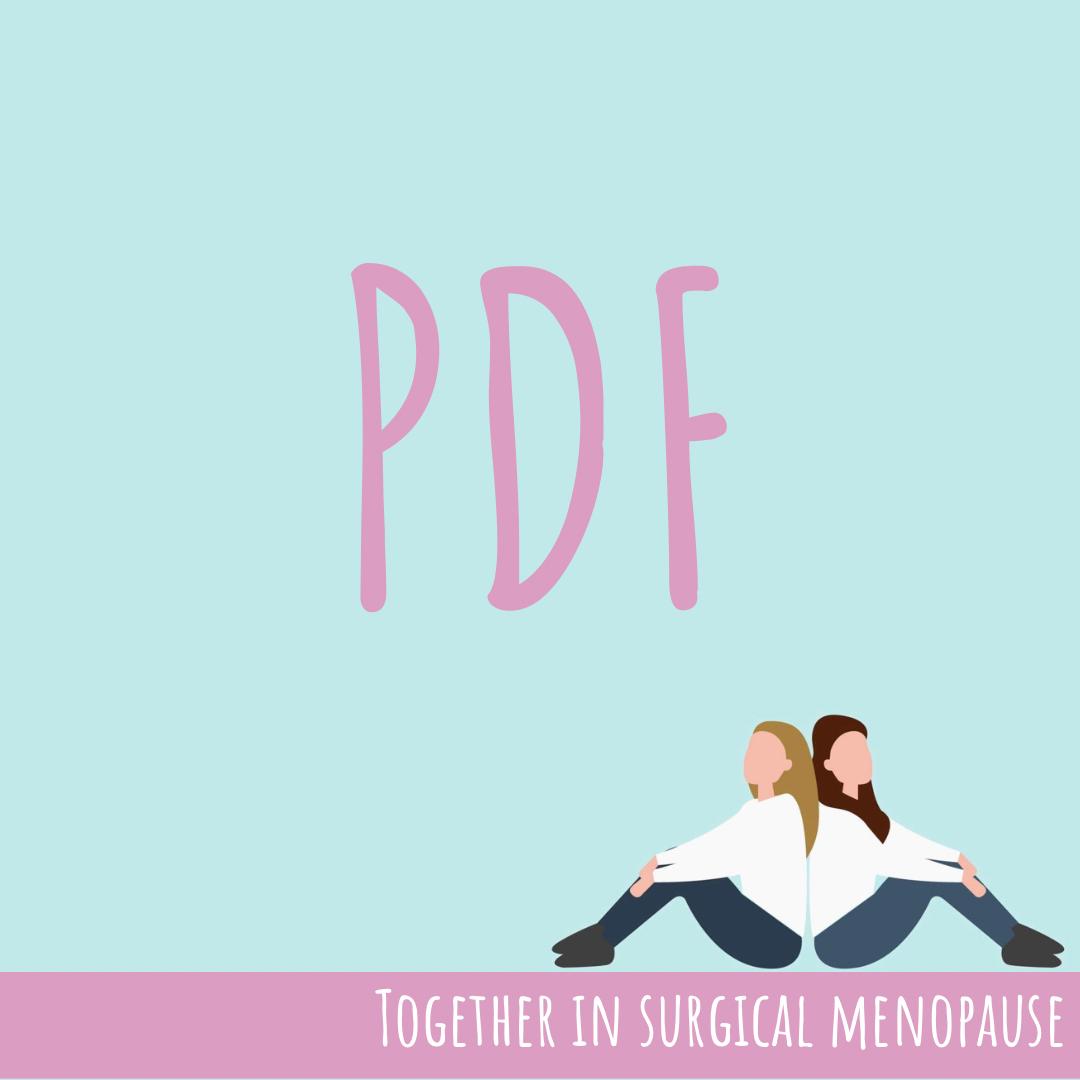

Join us as we ask Dr Mandy Leonhardt all about PMDD and Surgical Menopause.
Dr Mandy Leonhardt is a GP with a specialist interest in women’s hormonal health. She focuses on the treatment of hormonal migraines, Surgical Menopause, Perimenopause, Menopause and premenstrual mood disorders like PMS and PMDD. She is a member of the British Menopause Society and holds the Certificate in Menopause care by the British Menopause society. Together with a colleague she hosted the first Menopause Café in England (2018).
Mandy frequently speaks at women’s health charity events and local women’s health support groups. She has published a paper about depressive symptoms and Perimenopause in the BMS journal Post Reproductive Health. She is also an evidence based certified Nutritionist (MNU) and includes nutritional and lifestyle advice in her consultation.
PMDD stands for Premenstrual Dysphoric Disorder and as yet no single cause has been identified. Affected women experience severe physical and mental health symptoms such as the sudden onset of depressed mood, anxiety, irritability, anger, bloating and cramps. Symptoms typically happen 7-10 days before the start of the period and disappear quickly with the onset of the period.
Importantly, women tend to feel absolutely fine and function well during the rest of the month. We know that hormonal fluctuations during the second part of the menstrual cycle (luteal phase) can trigger symptoms. In general, it is thought that the women with PMDD, are particularly sensitive to fluctuations of sex hormones like progesterone and oestradiol. Progesterone is made during the luteal phase of the cycle, after ovulation occurred. The progesterone gets broken down into different metabolites. One of these metabolites is called allopregnanolone. The increase in allopregnanolone is associated with triggering sudden depressive symptoms, irritability, anger and anxiety in the brains of women who suffer with PMDD. The reason for this is not well known yet, but there is probably a genetic predisposition. We also know that stress and a history of trauma can increase the risk of developing PMDD.
It is thought that up to 75% of women notice some form of symptoms during the week before their period. These symptoms may affect their physical health such as bloating, pain, cramps or headaches, as well as their their mental health. They may feel more irritable, tense, low or anxious. But PMS symptoms are never so severe, that they will affect daily activities. PMDD on the other hand can be so debilitating, that women may feel suicidal, that they are unable to go to work and cannot function at all. PMDD affects around 3-8% of women, so it is less common than PMS. PMDD is a serious mental health condition and has been included in the Diagnostic and Statistical Manual of Mental Disorders (DMS).
Even though it is the rise and fall of sex hormones which trigger symptoms of PMDD, hormone tests are not recommended, because they are not helpful to make the diagnosis. Blood levels of hormones are usually entirely normal. It is not the hormone itself, but rather the changing levels, which seem to trigger the symptoms. Some blood tests may be useful if women have other symptoms in addition to PMDD throughout the month.
Checking thyroid function, vitamin D, B12, folate, full blood count and iron levels can be useful to exclude underlying causes, fatigue for example. The recommended way to diagnose PMDD is to ask women to fill in a daily symptom diary to track her physical and mental health throughout the month. This can be done on a paper form or by using an APP. PMDD related symptoms should only be present during the second half of the menstrual cycle and there should not be any symptoms between day 4 and day 12, if the cycle is 28 days long. Keeping a symptom diary for 2-3 months is essential to confirm, that the symptoms are related to the menstrual cycle.
PMDD symptoms tend to disappear once women become menopausal. Menopause stops ovarian function and with it the hormone fluctuations stop.
Before a woman becomes menopausal, she can explore many treatment options ranging from lifestyle changes (healthy nutrition, exercise, relaxation, mindfulness, stopping alcohol and stimulants), to hormonal treatments (contraceptive pill, HRT, GnRH analogues) to antidepressants. Antidepressants, most often Serotonin Reuptake Inhibitors (SSRI’s) can be taken in a cyclical fashion during the luteal phase and the days when symptoms occur and they can be taken together with hormonal treatments.
The last resort for treating PMDD is removing the ovaries. This will stop the hormonal ups and downs, but women will then have to deal with the symptoms of sudden menopause. It is important that women seek help from a specialist who specialises in premenstrual mood disorders and who can discuss all the pros and cons and treatment options with them.
For most women removing the ovaries is the last resort and they should carefully think about the risks and benefits associated with it. Once ovaries are no longer there to produce sex hormones, women or rather their brains are no longer exposed to the hormonal fluctuations they used to experience every month. Women who undergo a bilateral salpingo-oophorectomy will be immediately menopausal after their surgery. Menopausal symptoms can be treated with HRT, but women need to be aware that their brains will still be hormone sensitive. Most women with PMDD are severely progesterone sensitive and they frequently also have their uterus removed, so that they do not need to take progesterone or progestin for endometrial protection post op.
Unfortunately, the brain of a woman in surgical menopause due to PMDD continues to be sensitive to sex hormones for the rest of her life. Removing the ovaries, removes the hormones and the fluctuations, but not the response to these hormones in the brain. Women still need sex hormones like oestrogen to function and to prevent the accelerated ageing process we see after surgical menopause. Most women below the natural age of menopause (age 51) are advised to start hormone therapy, to prevent osteoporosis, cardiovascular disease, a decline of cognitive functioning and other conditions related to oestrogen deficiency.
Replacing oestrogen can be in the form of a patch, a gel, a spray, a tablet or an implant. It is important that fluctuations are avoided when using HRT, because this can trigger unwanted PMDD type symptoms, but some women either don’t absorb their HRT well or they still experience some fluctuations and/or struggle to find the right dose or the right form of HRT. Instead of experiencing PMDD, they may now struggle to control their menopausal symptoms. These symptoms may not be quite as severe as the PMDD they experienced before, but they can nonetheless negatively affect their quality of life.
The brain may also need time to adapt to the different hormonal environment and of course the brain continues to stimulate ovaries, which are no longer there and this may alter the response to the hormones which are replaced. We know that the changing levels of hormones throughout the month in a woman who has a natural menstrual cycle also changes the number of nerve cells, hormone receptors and the plasticity of the brain. There has been very little research to look at the impact on the brain when it is exposed to the abrupt cessation of the menstrual cycle.
When ovaries are removed women also lose 50% of their testosterone. Testosterone is an important hormone for general wellbeing, muscle strength, energy levels, cognitive functioning and libido. Women in surgical menopause should be offered testosterone replacement. This is still not commonplace and often women struggle to access this.
Women in surgical menopause can find support from the Daisy Network and from the British Menopause Society. The American website The Surmeno Connection is also excellent. These women should be under the care of a menopause specialist and reviewed frequently.

Click here to download our catch up with Dr Mandy Leonhardt as a PDF
Dr Mandy Leonhardt is a GP with a specialist interest in women’s hormonal health. She focuses on the treatment of hormonal migraines, Surgical Menopause, Perimenopause, Menopause and premenstrual mood disorders like PMS and PMDD. She is a member of the British Menopause Society and holds the Certificate in Menopause care by the British Menopause society. Together with a colleague she hosted the first Menopause Café in England (2018).
hormoneequilibrium hormoneequilibrium.co.uk